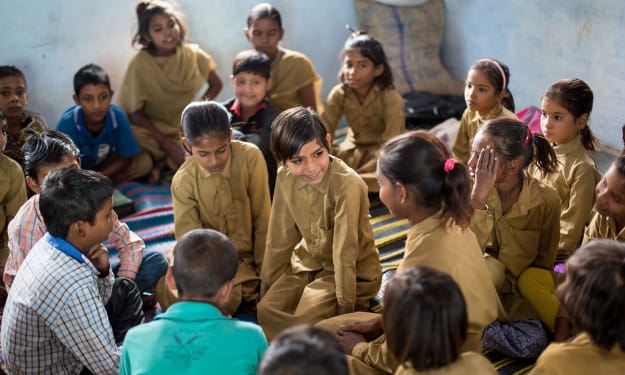Uprooting an Evil – Ways to Prevent Child Marriage in India
The social evil of child marriage has historical moorings in the Indian context.

The social evil of child marriage has historical moorings in the Indian context. UNICEF defines child marriage as an informal or formal marriage union between an adult and a child or between two children, typically below 18 years. UN Women opines that child marriage is equivalent to 'forced marriage' as underage children cannot give legally valid consent. In India, the Prohibition of Child Marriage Act of 2006 states that child marriage implicates a marriage or a marriage that is going to be solemnized to which of the contracting parties is a child. The definition of child includes girls who are below 18 years and boys who are below 21 years. Despite stringent laws that criminalize and prohibit child marriage in contemporary India, the practice continues with little to no hindrance. As per statistics, one out of three adolescent girls (age group of 15 to 19) is married, and every second married adolescent girl has given birth to a child. It becomes crucial to find ways to prevent child marriage in the country.
Child Marriage in India – History, and Contemporary Prevalence
Child marriage has been practiced for centuries in India, and the problem is rooted in a complex web of religious traditions, socio-economic practices, and ingrained prejudices. We can trace the lineage of child marriages to feudal societies where the Naganika concept was pervasive. Parents believed that they would go to hell if they did not marry off their daughters before puberty. But, practices and perceptions change with time. Thus, a consciousness about the detriments of child marriage emerged gradually, courtesy of global historical changes, efforts of the Reformist Movement of 19th century India, and some interventions made by the British crown.
Moving ahead, when we talk about the post-independence context, the legal age of marriage in India is fixed at 18 for girls and 21 for boys. However, child marriages are still conducted, especially around the Hindu holiday – Akshaya Tritiya. As per Census data of 2009, Jharkhand state recorded the highest proportion of child marriages for girls with 14.1 percent, followed by West Bengal at 13.6 percent, Bihar at 9.3 percent, and Assam at 8.9 percent. But, we have to remember that the secrecy and covertness of child marriages make them so dogged and dangerous. Very few cases come into the official radar as child marriage is a crime in India. Before talking about the solutions to end child marriage, let us glance at its causes.
- Illiteracy
- Poverty and lack of resources force parents to marry off their daughters early.
- Insecurity arising from the deep-seated belief that girls are an economic burden and don't add any value to the family
- Lack of awareness
- The absence of higher education among girls as lower levels of formal education correlates to lower marriage age.
- Improper implementation of laws
- Strict caste endogamy and fear that the caste-based code of conduct will be violated if girls or even boys become old enough (18 or 21 plus) to choose their own partners
- Patriarchal beliefs and association between the 'purity' of a girl with community honor
Ways to Prevent Child Marriage in India
The presence of laws has shown us that the legalese is not enough to eradicate the evil of child marriage from India. Thus, the solutions to end child marriage do not solely lie in the hands of police and courts, and we need an awareness program that reaches every nook and corner of the country. In addition, rather than looking at child marriage superficially, we have to gauge its sources and deal with them efficiently. To begin with, by making tertiary or college and university-level education a common phenomenon for girls and women, there is a wide possibility of reducing child marriage and increasing the average age of marriage for women in India. Likewise, to disseminate higher learning, it is imperative to reduce poverty and materialize genuine poverty alleviation programs. Employment schemes and job generation are the keys that can bring child marriage rates down in the near future.
In addition to tangible measures, aiming for a psychosocial change is essential, and the hour's need. The patriarchal beliefs and practices such as dowry and female infanticide or foeticide have to be uprooted if we want to make India child marriage-free. One critical way to break free from discriminatory practices is to focus on primary and high school education. Rigorous gender sensitization, gender-neutral books, and providing gender-sensitive training to teachers are indispensable to eliminate various pertinent forms of gender inequality and gender-based violence.
As ordinary citizens, there is a lot that we can do in our homes, neighborhoods, and communities as ways to prevent child marriage. Engaging in meaningful conversions with people who support child marriage or dowry, reporting domestic violence cases to the police or even some authority, and being open-minded goes a long way. Lastly, NGOs play a vital role in throwing light at child marriage's evil. Sathyarthi.org is an NGO whose objective is to prevent child marriage in India and make the country children-friendly.





Comments
There are no comments for this story
Be the first to respond and start the conversation.